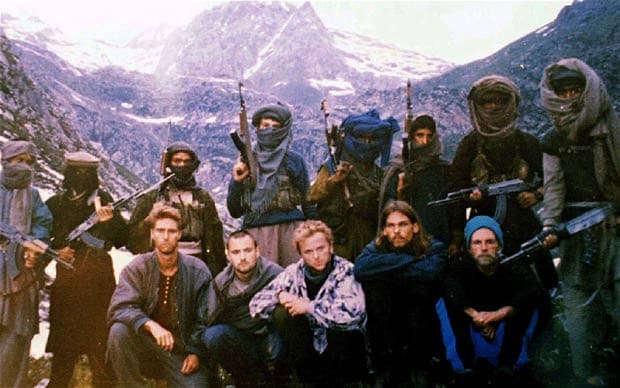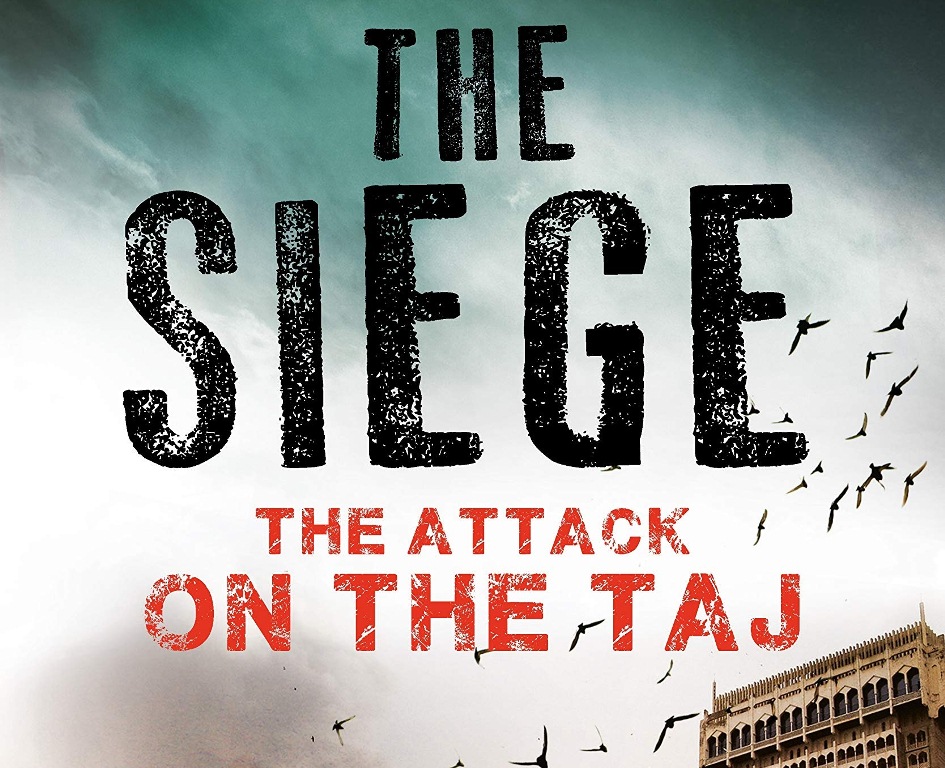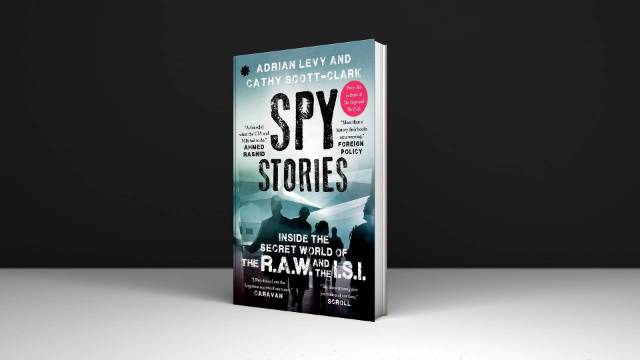‘Doval Called Us Back’: Authors of ‘Siege’ Return With Spy Thriller

Ubaid Majeed is the Editor-in-Chief at the Mountain Ink.
In their latest book ‘Spy Stories: Inside the Secret World of the RAW and the ISI’, published by Juggernaut, journalist-couple Adrian Levy and Cathy Scott-Clark talk about their active involvement in an Indo-Pak backchannel connection while writing about the Pulwama bombing, Pathankot strike and Burhan Wani.
Two years after Kashmir witnessed a street simmer over the schoolboy’s killing in the heartland and the fake encounter of three labourers in the hinterland, two scribes uncovered the sensational strife spectacle—the abduction of around a dozen western backpackers in a volatile oriental world. The Meadow: Kashmir 1995 – Where the Terror Began was hailed as a gripping human story — “fascinating, minutely re-enacting a horrifying moment that was to send out ripples for decades to come”.
The book—termed as ‘a real-life version of The Beach by Alex Garland’—was about the ten backpackers seeking solace in the war-torn mountains in July 1995. But shortly, their ‘nirvana trip’ got them entangled in a nail-biting hostage crisis in Kashmir. Amid global news coverage, four hostages mysteriously disappeared. The subsequent hounding and hunting further strained New Delhi-Islamabad ties in the year of the UN showdown.
Award-winning investigative journalists, Adrian Levy and Cathy Scott-Clark, recreated the real-life thriller with diaries, journals, letters, unprocessed film, classified reports, secret recordings and insurgent interviews. The book was termed as the definitive end to the story, which remained unresolved for seventeen years.

A year after providing the first definitive answers as to what happened to the missing backpackers, the scribe couple made a comeback with The Siege: The Attack On Taj, published by Penguin Books India in 2013.
The book revealed how the R&AW (Research & Analysis Wing), India’s external intelligence agency issued 26 different warnings regarding the attack.
Support Our Journalism
You are reading this because you value quality and serious journalism.
But, serious journalism needs serious support. We need readers like you to support us and pay for making quality and independent journalism more vibrant.
The authors’ real-life thriller wherein one “Kashmiri spy penetrated Lashkar-e-Taiba and planted 22 cellphone SIM cards on its commanders” would become one of the intriguing treatises on 26/11.

Eight years later, the scribe couple came back with another spy drama focusing on the recent events—Parliament attacks, Pulwama bombing, Pathankot attack and Burhan Wani—shaping statecraft as well as spycraft in contemporary India.
The book details these defining incidents from the split standpoints of sparring deep-state adversaries.
“Revelatory and unputdownable,” reads a review, “Spy Stories clears the fog to reveal the spies and their assets, as you have never seen them before.”
While exploring the two-nation deep-state ties, the investigative reporters majorly banked on two spymasters — Inter-Services Intelligence (ISI) officer, ‘Major Iftikhar’ and the former R&AW officer, ‘Monisha’— apart from former R&AW chief Rajinder Khanna and military defence official, Lt Gen. Vinod Khandare.

One of the major exposes of the book is how National Security Advisor (NSA) Ajit Doval and R&AW exchanged messages with top Pakistani ISI officials through Adrian Levy and Cathy Scott-Clark in 2018-2019, in what is termed as a “unique Indo-Pak backchannel connection”.
“Backchannel talks also took place following the Pulwama attack in February 2019 that killed about 40 CRPF personnel,” the book notes.
On the heels of the Pulwama bombing, in which Kashmiri suicide bomber, Adil Dar, rammed his explosive-laden car to the paramilitary convoy at Lethpora on February 14, 2019, the authors—shuttling between Rawalpindi and Delhi for spycraft—were contacted by former ISI C-wing chief, Lt. Gen. Nusrat Naeem.
Disclaiming any knowledge about the Jaish-e-Mohammad (JeM) attack in Pulwama, the ISI officer revealed it was planned in Afghanistan’s Helmand. “Pakistani officials were worried about Financial Action Task Force (FATF) sanctions, and delicate negotiations between the U.S. and the Taliban, and would not have risked a conflagration with India at that point,” the book says.
But Doval didn’t buy the Pak version and “assured” the authors that an upcoming report on Pulwama “would lay bare” the ISI’s involvement.

“Doval called us back,” write the authors, calling themselves a “Gavrilov channel”, of the Cold War era, between the CIA and the KGB.
Government of India subsequently carried out the Balakot air strikes amidst the Indo-Pak backchannel talks. With that operation, Doval is quoted as having said, “India has changed its strategic calculations”.
Tracing NSA’s career from the 1999 IC-814 hijacking he termed as a “diplomatic failure”, the authors say they were called to a “darkened situation room” in Sardar Patel Bhawan, to pitch their spy book to “the third powerful man in India”.
The book—containing recorded conversations, intelligence and analysis reports—has come in an era when civil servants have been barred from sharing any operation details.
Interestingly, by reporting Doval’s meeting with a Saudi delegation at his office on a bilateral visit, the authors overturn India’s official policy that there’s no role for “third parties” in Indo-Pak talks.
The book also uncovers a “dirty cop” angle in the 2016 Pathankot airbase attack in which seven armed personnel were killed. “One dirty cop had found an area where there were multiple vulnerabilities: the floodlights were down, and the C.C.T.V. cameras had no coverage. There was no surveillance equipment of any kind and a large tree grew beside the perimeter wall that one written report identified as a security hazard.”
Apparently clearing the smoke over the late Intelligence Bureau chief Dineshwar Sharma’s sudden summer visit in Kashmir in 2016, the authors of Spy Stories claim that Indian agencies had infiltrated Hizb commander Burhan Wani’s internal circle, and kept him under constant surveillance. “Veterans risked the LoC crossing into India, without knowing that the Indian agencies were constantly monitoring them,” they write.
But then, many say, if Wani was acting “flypaper for the Indian intelligence community”, as the authors assert, then what explains his killing on July 8, 2016, when IB chief had himself visited the valley?
Because in New Delhi, the authors say, “something had shifted.”
Mountain Ink is now on Telegram. Subscribe here.
Become Our Ally
To help us strengthen the tradition of quality reading and writing, we need allies like YOU. Subscribe to us.













